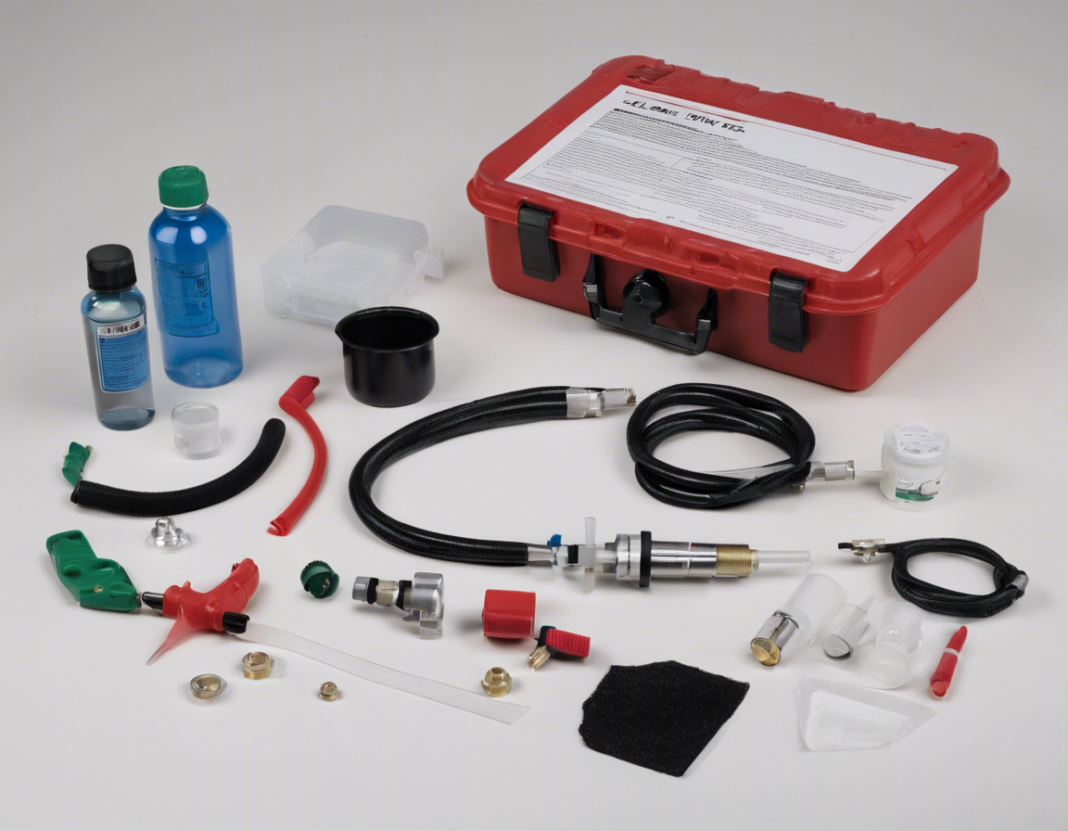Engines are complex machines with multiple moving parts that need to work in harmony to achieve optimal performance. When an engine is not running as it should, it can be challenging to pinpoint the root cause of the issue. This is where a leak down test kit comes in handy. Conducting a leak down test can provide valuable insight into the health of your engine and help you identify the source of any performance problems. In this comprehensive guide, we will delve into the importance of leak down testing, how to conduct a test using a leak down test kit, and what the results can reveal about your engine’s performance.
The Basics of Engine Performance
Before diving into the specifics of leak down testing, it’s essential to understand the basics of engine performance. An engine relies on a series of controlled explosions within its cylinders to generate power. For this process to occur efficiently, the cylinders must maintain proper compression levels. Compression is the term used to describe the air-fuel mixture’s pressure within the cylinder before it is ignited by the spark plug. If there is a leak in the cylinder, it can lead to a loss of compression, resulting in reduced engine performance.
What is a Leak Down Test?
A leak down test is a diagnostic procedure used to determine the health of an engine’s cylinders and identify any potential issues that may be affecting performance. During the test, compressed air is introduced into the cylinder through the spark plug hole. The amount of air that leaks out of the cylinder is measured, providing valuable information about the integrity of the cylinder and its components. This test can help identify a range of issues, including worn piston rings, leaking valves, cracked cylinder walls, and blown head gaskets.
The Importance of Leak Down Testing
Conducting a leak down test is crucial for maintaining and maximizing engine performance. By identifying and addressing any issues early on, you can prevent more significant problems from developing and ensure that your engine is running efficiently. Some of the key benefits of leak down testing include:
-
Identifying Compression Loss: A leak down test can pinpoint areas of compression loss within the engine, helping you address the root cause of performance issues.
-
Preventing Costly Repairs: By catching problems early, you can avoid more extensive and expensive repairs down the line.
-
Optimizing Performance: A well-maintained engine will perform better and deliver improved fuel efficiency and power.
How to Perform a Leak Down Test
Performing a leak down test requires a leak down test kit, which typically includes a gauge to measure air pressure, as well as the necessary fittings and hoses to connect the gauge to the cylinder. Here’s a step-by-step guide on how to conduct a leak down test:
-
Prepare the Engine: Ensure the engine is turned off and cool before starting the test. Remove the spark plug from the cylinder you wish to test.
-
Connect the Gauge: Attach the gauge from the leak down test kit to the spark plug hole using the appropriate fittings and hoses.
-
Pressurize the Cylinder: Use a compressed air source to introduce air into the cylinder. Be sure not to exceed the maximum pressure recommended for your engine.
-
Reading the Gauge: The gauge will display the percentage of air leakage from the cylinder. Compare this reading to the manufacturer’s specifications to determine if the leakage is within an acceptable range.
-
Interpreting the Results: Based on the percentage of leakage, you can diagnose the health of the cylinder. Lower percentages indicate better cylinder integrity, while higher percentages may point to issues such as worn piston rings or leaking valves.
Common Causes of Compression Loss
Compression loss can occur for various reasons, each with its own set of symptoms and implications for engine performance. Some of the common causes of compression loss include:
-
Worn Piston Rings: As piston rings wear down, they may allow air to escape from the cylinder, reducing compression.
-
Leaking Valves: Damaged or improperly seated valves can lead to air leakage during the compression stroke.
-
Blown Head Gasket: A blown head gasket can result in compression loss between cylinders or between the cylinder and coolant passages.
-
Cracked Cylinder Walls: Cracks in the cylinder walls can compromise compression and lead to reduced engine performance.
FAQs about Leak Down Testing
Q: How often should I perform a leak down test on my engine?
A: It is recommended to perform a leak down test as part of regular engine maintenance, especially if you notice any performance issues.
Q: Can a leak down test pinpoint the exact cause of compression loss?
A: While a leak down test can identify areas of compression loss, further inspection may be needed to determine the exact cause.
Q: What is a good percentage of leakage for a healthy engine?
A: Typically, a leakage rate of 5-10% is considered acceptable for a healthy engine.
Q: Can I perform a leak down test on my engine myself, or should I consult a professional?
A: While it is possible to perform a leak down test yourself with the right equipment, if you are unsure or inexperienced, it may be best to consult a professional mechanic.
Q: What are some signs that indicate I should perform a leak down test on my engine?
A: Symptoms such as loss of power, excessive oil consumption, or unusual engine noises may indicate the need for a leak down test.
In conclusion, a leak down test kit is a valuable tool for diagnosing engine performance issues and maximizing the efficiency of your engine. By conducting regular leak down tests and addressing any compression loss promptly, you can ensure that your engine runs smoothly and efficiently. Remember that early detection of problems can save you time, money, and headaches in the long run.
